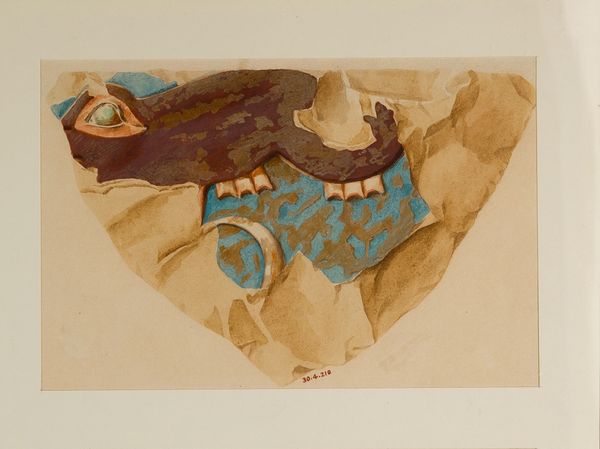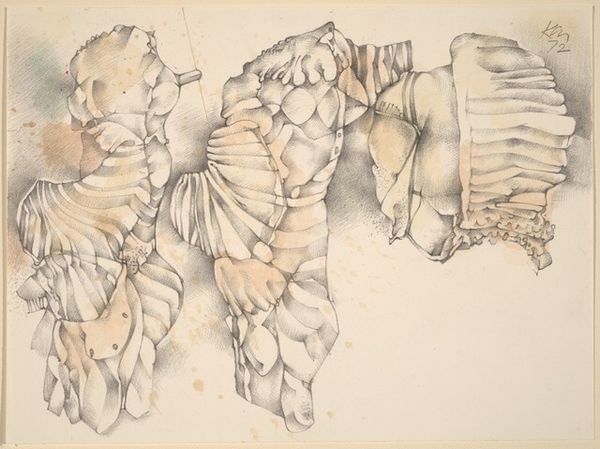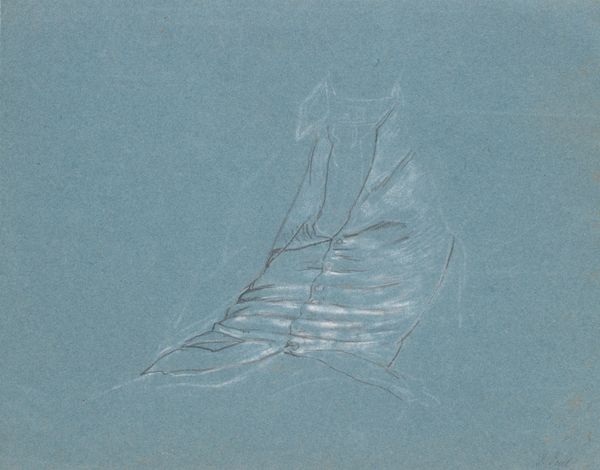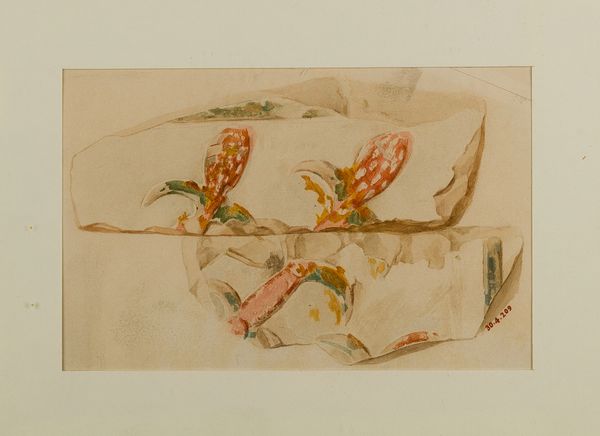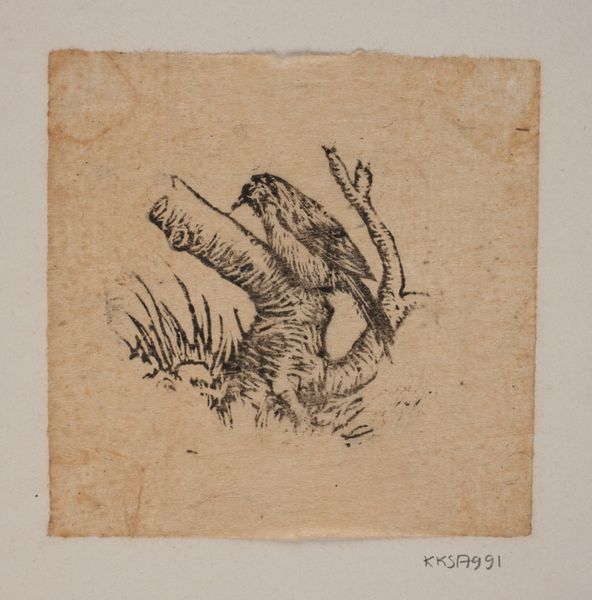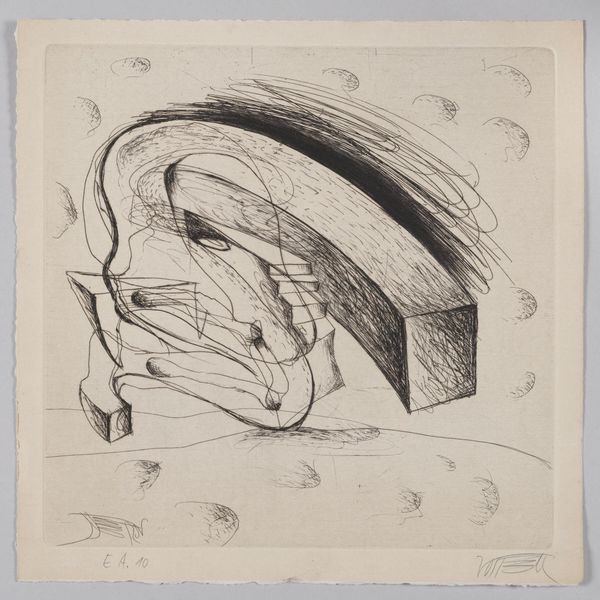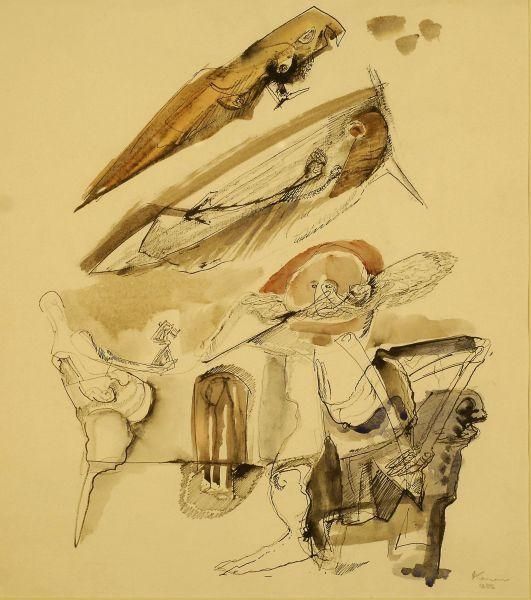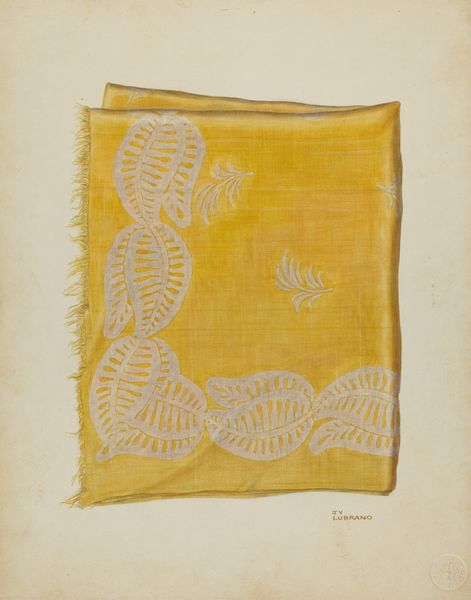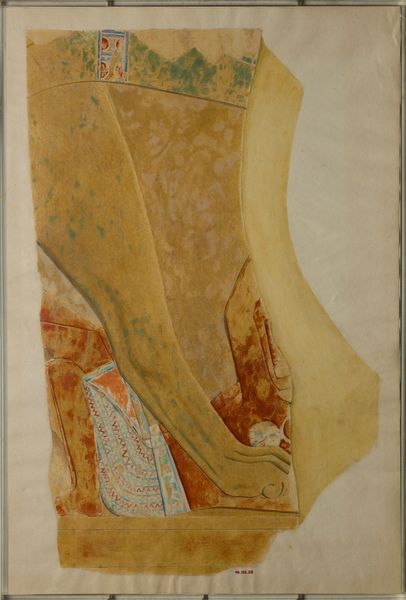
painting, watercolor
#
painting
#
landscape
#
bird
#
ancient-egyptian-art
#
oil painting
#
watercolor
#
egypt
#
ancient-mediterranean
#
watercolor
Dimensions: H. 17 cm (6 11/16 in); w. 19 cm (7 1/2 in) scale 1:1
Copyright: Public Domain
Curator: Well, what do you make of this watercolour of Water Fowl? The piece, believed to date back to 1473 BC, resides here at the Metropolitan Museum of Art. It’s really rather ancient, isn't it? Editor: It's… faded, somehow ethereal. It’s as if the birds are emerging from a desert haze. Not sure if I like it… something’s troubling. Curator: Perhaps the somewhat ghostly quality derives from the style and the medium, particularly when situated within the larger artistic production of the Ancient Egyptians? You know, birds were quite symbolic. Think about the soul taking flight and transformation, that kind of thing... Editor: Yes, transformation always felt tied to political discourse in ancient Egyptian art. But beyond that, looking at it now, this makes me think of, frankly, power—the ruling elite using depictions of animals to justify hierarchies. Curator: Hmmm, there’s a boldness in the bird's depiction though. Do you notice the geometry, the angles, within something so ostensibly… organic? And there's the curious matter of incompleteness. I wonder, was this found within a tomb? Perhaps unfinished at the time of entombment? Editor: That incompleteness, precisely. It unsettles. But maybe the question is who had the privilege, the audacity, to define what "finished" even meant back then? These images, these supposed ‘sacred’ depictions, always carry such heavy implications. What did the imagery legitimize, you know? Whose stories did it erase? Curator: Ah, there you go, digging right into the social-political undertones. Maybe there’s something liberating in this unfinished quality – like it invites us to write our own narrative. Editor: And what if that narrative questions the established power structures? Disrupts the ancient, calcified stories we tell ourselves? Curator: Perhaps art, in its most lasting form, acts as an ongoing discussion. Millennia may have passed, but these "Water Fowl" still spark fresh questions. Editor: Questions that refuse to let the past remain buried, challenging us to envision new possibilities for a world in flight.
Comments
No comments
Be the first to comment and join the conversation on the ultimate creative platform.
